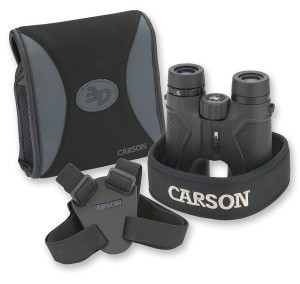Binoculars – Understanding The Terms
Exit Pupil
Exit pupil is the result of dividing the objective lens diameter by the magnification. Dividing thus will give you a number approximately between 4 and 8. The number which is measured in diameter, represents the beam of light that leaves the eyepiece when you hold a binocular with the objective pointed towards a light source.
Example, a 7×50 binocular has an exit pupil of 50 divided by 7, just over 7 millimeters in diameter.
The ideal exit pupil of a binocular should be equal or slightly smaller than the pupil of your dark-adapted eye. In this way the binocular will deliver the maximum amount of light and produce the brightest possible images for its aperture.
Under dark night conditions, the average young adult have pupils that are open to about 7 millimeters. What this means is that any instrument with an exit pupil larger than 7 millimeters will only waste light, as the light beam is the only light that could enter the eyes.
Our eyes dilate less as we get older, so the exit pupil size we need decreases to around 5 millimeters.
Field Of View
The area of the sky or land seen through your binoculars, determined by the design of the instrument’s optics is what is known as field of view (FOV). It is read in two ways; as the width in feet at 1,000 yards, or in degrees of field.
When it is read in feet the field is called linear, and when read in degrees it is called angular. Do not be confused by the terms, the conversion is easy; divide the linear field by 52.35 and you get the angular field.
The field in most cases is indicated on the outside of the binocular, in degrees. Values are at the average of between 5 and 10 degrees, or roughly 260 to 520 feet. To get an actual idea of how wide this field is, have the thought that in five degrees you can fit almost 10 Full Moon diameters!
If it is for astronomy, the wider the field of view the more desirable because it offers a more pleasant viewing experience, and you can see more of the sky at a better angle performance compared to a not wide field.
However, the images start to exhibit signs of distortion, especially near the edges of the field, when the field is increased beyond a certain point. Also bear in mind that field of view has to do with magnification; the higher the power of your binoculars, the smaller the field will be.
Eye Relief
This is the distance behind the eyepiece lenses at which the image is in focus, and indicates how far you can hold the binoculars from your eyes and still give you the chance to see the entire apparent field of view.
Generally, how great the eye relief will be is determined by how long the focal length is. A standard binocular usually have eye relief that ranges from just a few millimeters to twenty five millimeters or more.
Eyeglass wearers are better off with long eye relief, because the distance between your eye and the lens will be increase by the glasses. If it happens that your eyeglass correct only for short or long-sightedness, you can simply put them off and refocus the binocular to compensate.
Read also: Binoculars – The Basics
Interpupillary Distance
The distance between each of the viewer’s eyes is know as the interpupillary distance. Most binoculars are adjustable to make room for different interpupillary distances, typically within the range of 60 mm to 72 mm.
For the children and women who have interpupillary distance that is too short for a standard binoculars, the best option is to choose compact binoculars.
Read also: Binoculars – Overview
Ben Casnocha is an accomplished hunting writer whose passion for the outdoors and wildlife has driven his literary pursuits. With a deep-rooted connection to nature and a keen understanding of the hunting world, Casnocha brings a unique perspective to his writing, blending his experiences in the wilderness with insightful observations.

